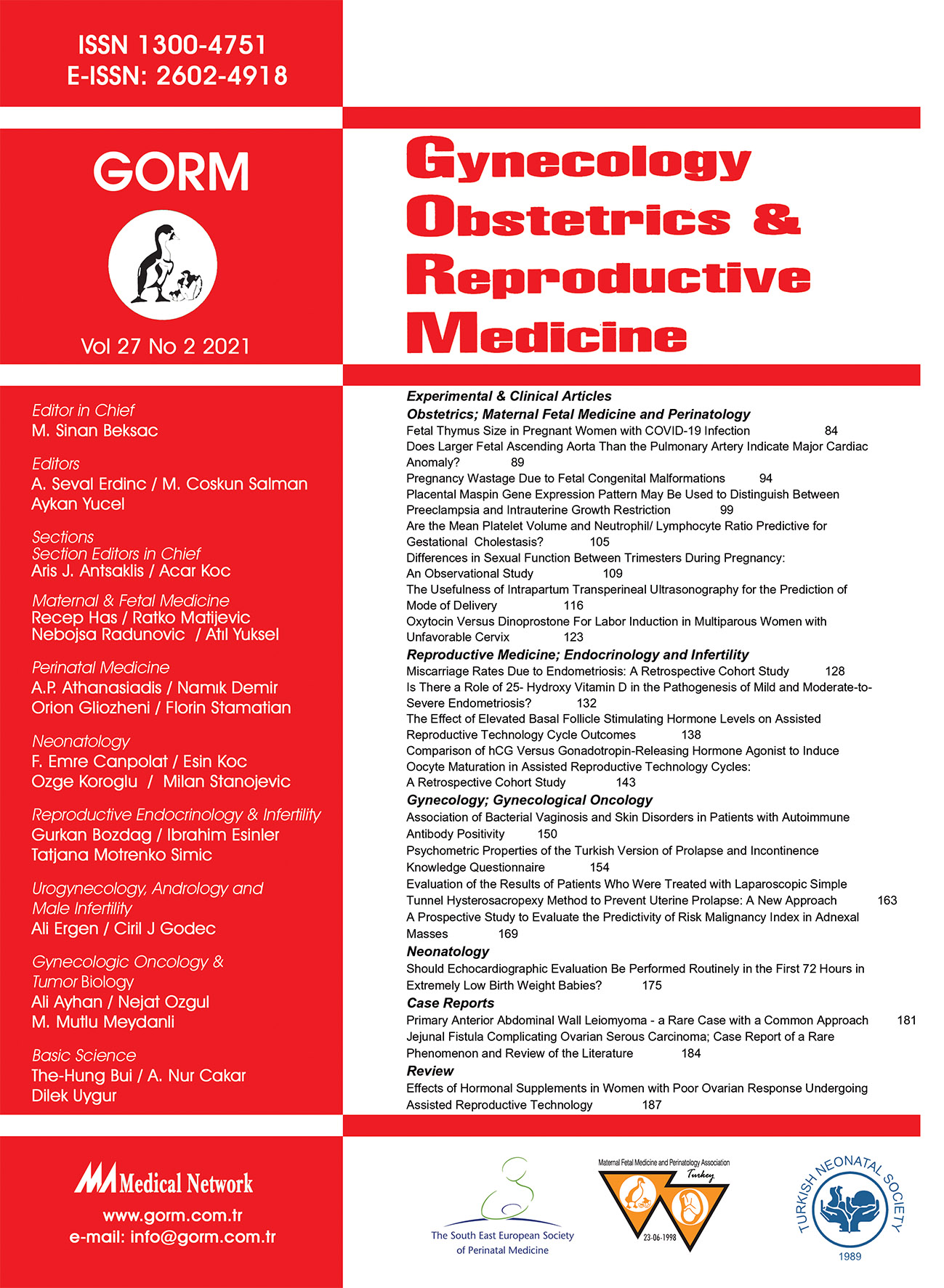Oxytocin Versus Dinoprostone For Labor Induction in Multiparous Women with Unfavorable Cervix
DOI:
https://doi.org/10.21613/GORM.2020.1039Keywords:
Cesarean rate, Dinoprostone, Labor induction, OxytocinAbstract
OBJECTIVE: Dinoprostone is a drug of choice in our daily practice for the induction of labor. The aim of our study; to compare the use of oxytocin with dinoprostone (PGE2- Propess©) used in term multiparous pregnant women to ripen the cervix.
STUDY DESIGN: A total of 507 patients were included in the study. Group A, consisted of 262 women with term multiparous pregnancy Bishop score ≤6 underwent induction of labor with a vaginal insert containing 10-mg timed-release dinoprostone (Propess© -prostaglandin E2). Group B, consisted of 245 cases of pregnancy with Bishop score ≤6 underwent induction of labor with iv oxytocin and was matched for the patient's age and parity. The following data were recorded: age, gestational age, body mass index, the time from the drug administration to the vaginal labor, delivery mode, indications of induction, cesarean indication, birth weight, Apgar score, and need of neonatal intensive care unit.
RESULTS: The primary outcome of the in group B interval from induction to vaginal delivery was similar between the two groups. In group A, 41 patients and in group B, 23 patients had a cesarean section. Cesarean section rate was lower in the oxytocin group (cesarean rate 15.6% versus 9.3%, p<0.05).
CONCLUSION: It appears; Dinoprostone ovule increases the cesarean rate in terms, multiparous cases with inappropriate cervical score and does not shorten the duration of delivery. Therefore, the use of oxytocin for cervical ripening in multiparous women may be a more appropriate option.
Downloads
Downloads
Published
How to Cite
Issue
Section
License
Copyright (c) 2020 Gul Nihal Buyuk, Umit Yasemin Sert, Zeynep Asli Oskovi Kaplan, Serkan Kahyaoglu

This work is licensed under a Creative Commons Attribution 4.0 International License.
All the articles published in GORM are licensed with "Creative Commons Attribution 4.0 License (CC BY 4.0)". This license entitles all parties to copy, share and redistribute all the articles, data sets, figures and supplementary files published in this journal in data mining, search engines, web sites, blogs and other digital platforms under the condition of providing references.





